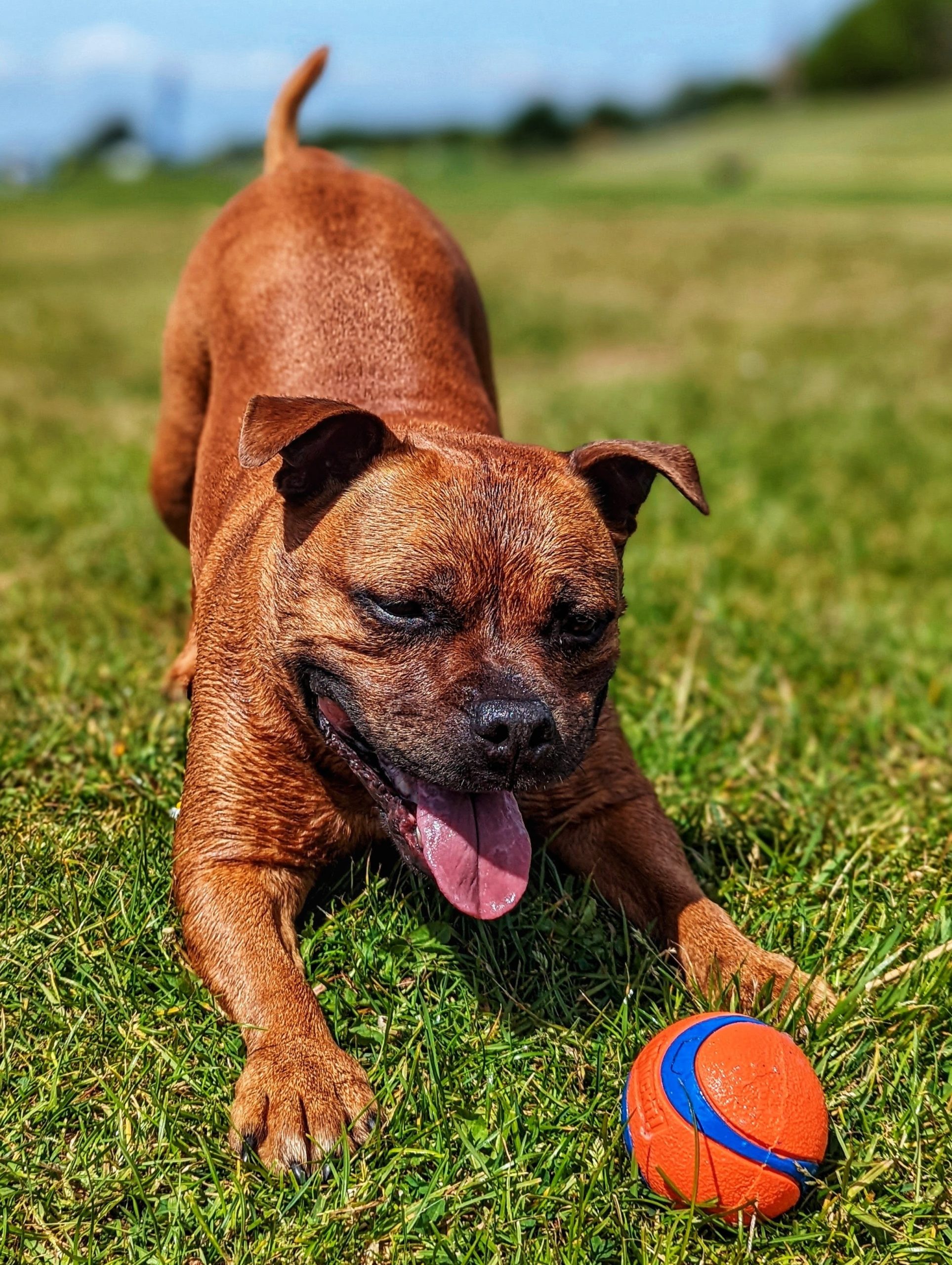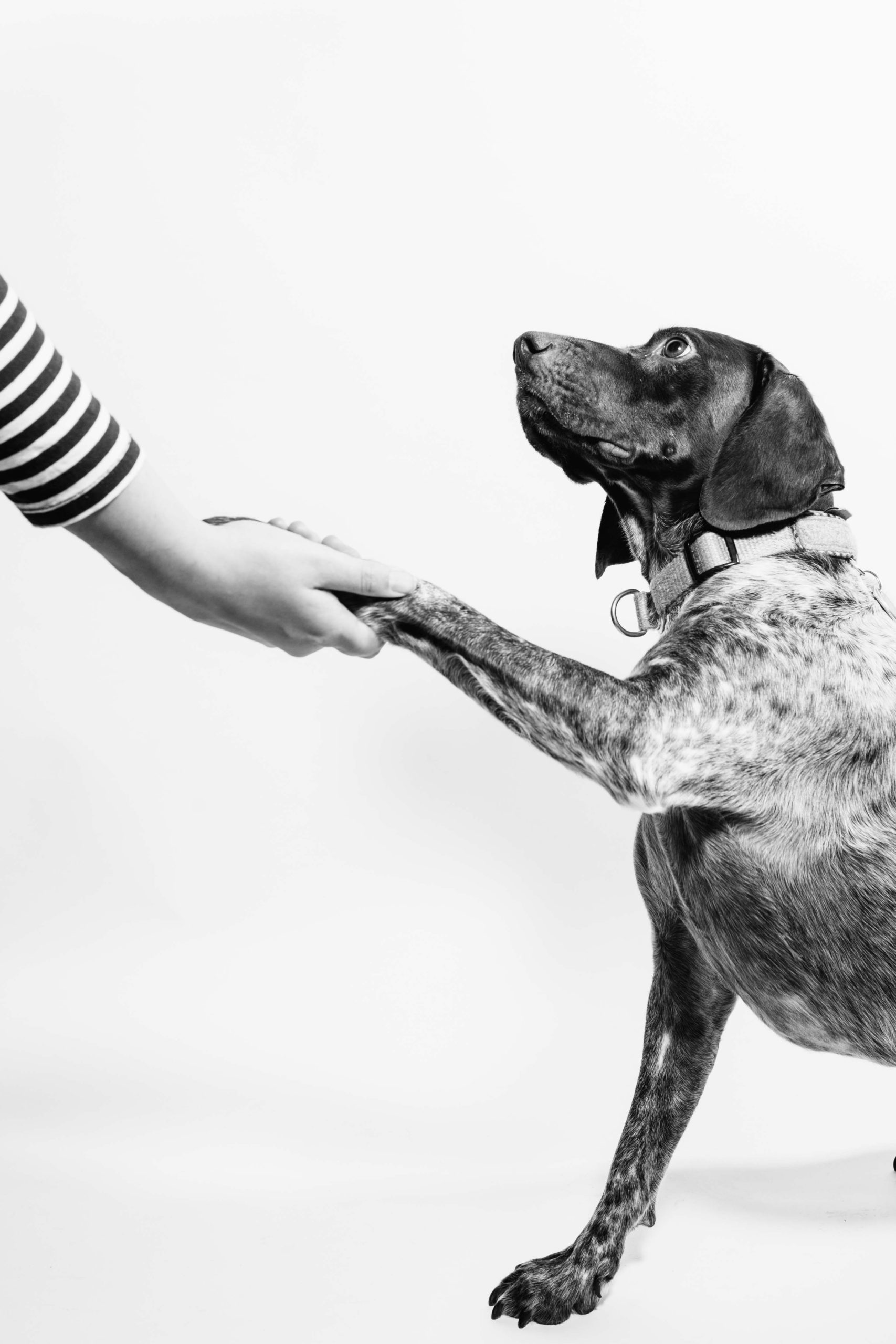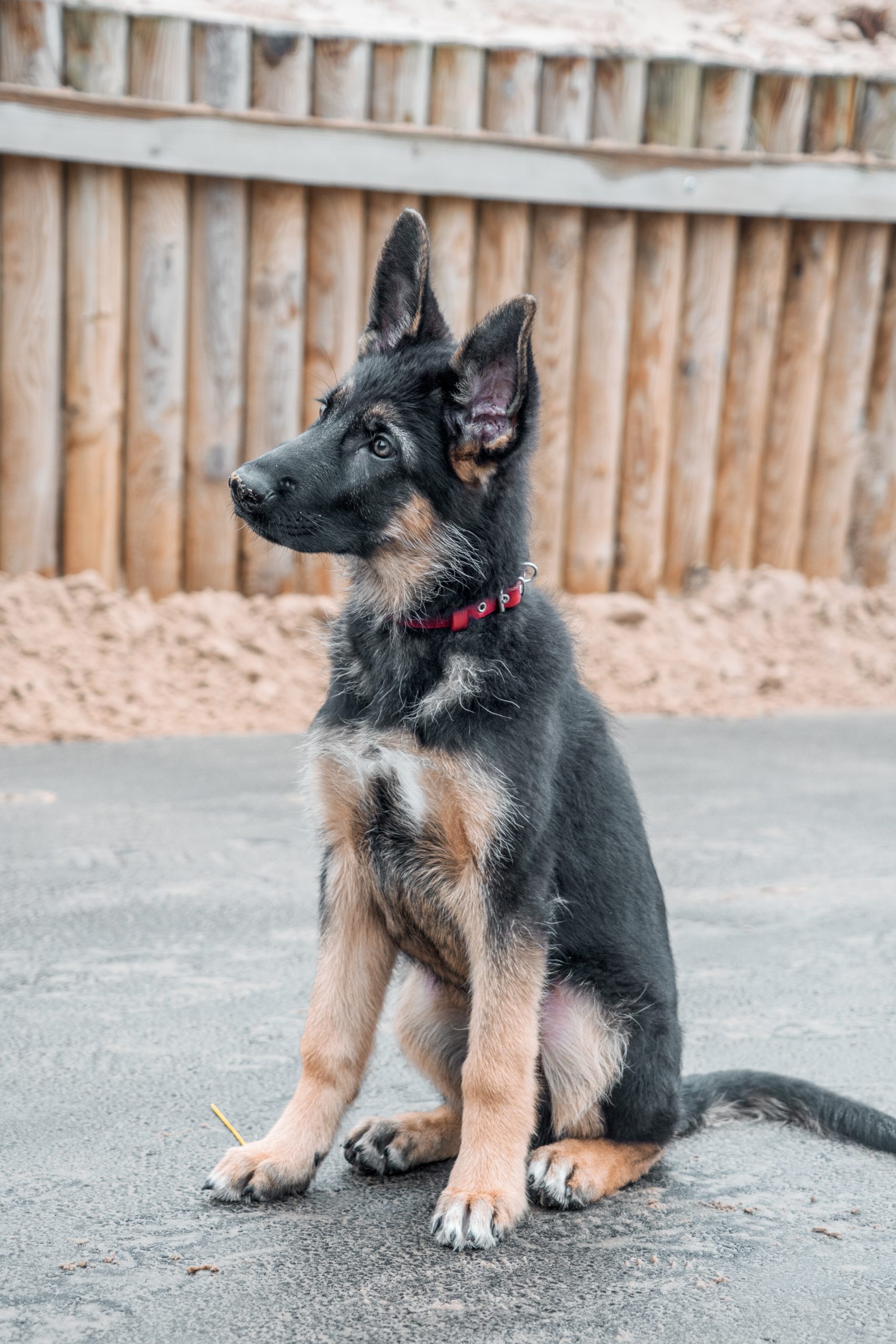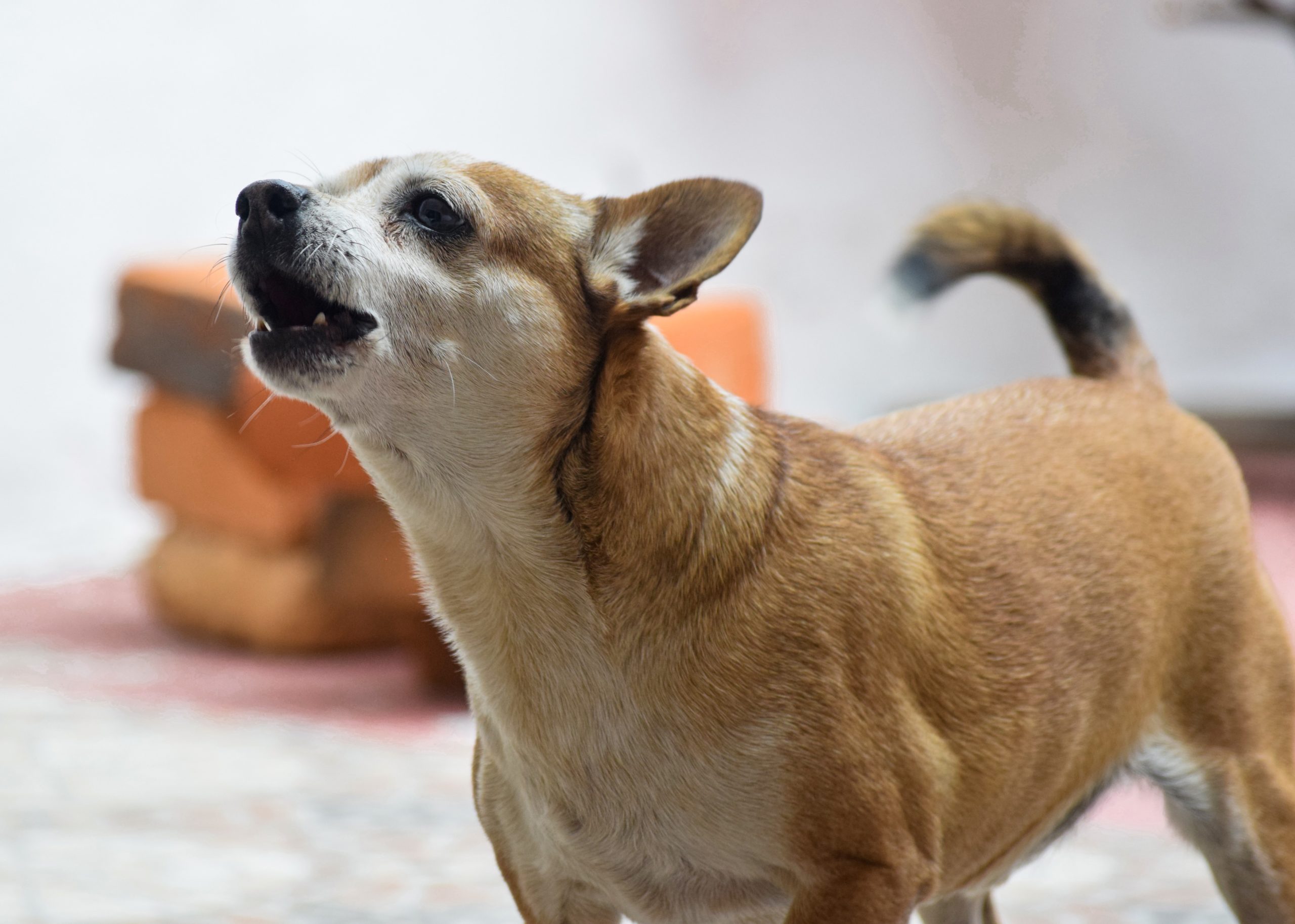Training games for dogs offer a fun and effective way to improve your furry friend’s cognitive abilities, behavior, and overall well-being. As pet owners, we all want our dogs to be happy and healthy companions who thrive in life.
These engaging activities can help enhance the bond between you and your dog while also teaching essential skills that make everyday life more enjoyable for both of you.
Benefits Of Training Games For Dogs
Training games for dogs provide numerous benefits, including mental stimulation, physical exercise, improved obedience and behavior, and a strengthened bond between the dog and owner.
Mental Stimulation
Mental stimulation is a crucial aspect of canine development and overall well-being. Engaging your dog in mentally stimulating activities helps prevent boredom, fosters creativity, and reduces the likelihood of negative behaviors such as destructive chewing or excessive barking.
One popular example of a mentally stimulating training game is the Name Game, where you teach your dog to recognize items by their names. Start with something familiar like their favorite toy, saying the name out loud as they interact with it.
Gradually introduce new objects and repeat the process until they can successfully retrieve specific items on command. This type of cognitive training not only enhances your dog’s problem-solving abilities but also boosts their confidence in navigating new situations and environments.
Physical Exercise
Playing training games can be a great way to ensure that your furry friend gets enough physical exercise. Just like humans, dogs need regular physical activity to maintain their overall health and wellbeing.
Incorporating physical exercise into their daily routine is essential in preventing weight gain and ensuring they have strong muscles and bones.
Moreover, regular physical exercise can also improve your dog’s mood by reducing stress levels. Better yet, it helps reduce destructive behavior caused by boredom or excess energy buildup since dogs tend to chew things when bored – making them less likely to damage property around the house.
Improved Obedience And Behavior
Training games for dogs not only provide entertainment and mental stimulation, they can also improve obedience and behavior. Consistent training sessions with positive reinforcement can teach a dog proper manners and commands while promoting good behavior habits.
For example, playing fetch with the concept of “drop it” teaches a dog to release an object on command and can prevent destructive chewing or resource guarding behaviors.
Agility courses require focus and discipline, which also translate to everyday obedience skills like staying put or walking attentively on a leash.
In fact, studies show that dogs who engage in regular brain-stimulating activities display less aggression towards strangers and show improved ability to learn new commands compared to those with limited enrichment opportunities (source).
Positive training games not only make life more enjoyable for dogs but also strengthen your bond as owner and pet.
Strengthened Bond Between Dog And Owner
Training games for dogs can do wonders in strengthening the bond between owners and their furry friends. Engaging in such activities helps to build trust, mutual respect, and communication between the two parties.
When playing hide-and-seek or other training games with your pup, you become the ultimate reward by offering them praise, treats or toys when they obey.
Moreover, essential skills training games provide an excellent opportunity to work together towards shared goals such as learning new tricks or recall training which enhances overall obedience and behavior in dogs while also creating opportunities for owners to bond with their pets.
Overall group sessions such as these necessitate consistency that has its benefit since regular participation builds rapport slowly but surely over time between owner(s) and dog(s).
Types Of Training Games For Dogs
Interactive games, puzzle toys, agility and obstacle courses, and fetch and retrieval games are just a few examples of the types of training games that can improve your dog’s mental and physical abilities.
Interactive Games
Interactive games are a fantastic way to train your dog while having fun. These games are designed to engage your pup’s mind and body, making for an enjoyable learning experience. Here are some interactive dog training games you can try with your furry friend:
- Tug of War: This game helps develop your dog’s strength and obedience skills. All you need is a rope toy and two participants. Take turns pulling the rope, and make sure to teach your pup a release word to end the game.
- Red Light, Green Light: In this game, you will use commands such as “stop” and “go” to encourage your dog’s impulse control skills. Start by saying “green light” and encouraging them to come towards you, then switch it up with a “red light” command for them to stop in their tracks.
- Shell Game: Hide a treat under one of three cups or shells then mix them up in front of your puppy, asking them which cup has the treat underneath.
- Find It: Teach your pooch the “find it” command where they must sniff out treats hidden around the house or yard.
- Simon Says: Practice different tricks like sit, down, stay and others – but only when Simon says!
Interactive games are an excellent tool for strengthening bonds between owner and pet while keeping dogs mentally stimulated and physically healthy. Try incorporating these games into playtime with your furry best friend!
Puzzle Toys
Puzzle toys are a great way to keep your dog mentally stimulated and engaged. These toys come in a variety of shapes and sizes, but they all have one thing in common: they challenge your dog to think and problem-solve. Here are some benefits and tips for using puzzle toys with your pup:
- Benefits:
- Puzzle toys provide mental stimulation that can help prevent boredom and reduce destructive behaviors like chewing or digging.
- Solving puzzles can be a fun way for dogs to release excess energy.
- For dogs that may not be as interested in physical exercise, puzzle toys provide an alternative way to get their brains working.
- Using puzzle toys can also improve your dog’s cognitive abilities, including memory, problem-solving skills, and spatial awareness.
- Tips:
- Keep the difficulty level appropriate for your dog’s abilities. Start with simpler puzzles and gradually increase the complexity as your dog gets better at solving them.
- Consider the material of the toy – some dogs may prefer certain textures or materials when it comes to playing with puzzle toys.
- Make sure the toy is safe for your dog to play with and doesn’t have any small pieces that could be ingested.
- Use positive reinforcement when introducing new puzzles or when your dog successfully solves one. Praise them or offer small treats as rewards.
Overall, puzzle toys can provide a fun and mentally stimulating activity for your furry friend. Just remember to always supervise them while playing with any type of toy.
Agility Courses
Agility courses are a great way to train your dog and improve their fitness level. Here are some key benefits and tips for agility training:
- Benefits of Agility Courses:
- Builds Confidence
- Improves Coordination
- Boosts Physical Fitness
- Develops Obedience Skills
- Tips for Agility Training:
- Start Slow and Easy
- Use Positive Reinforcement
- Be Consistent with Commands
- Vary the Course Layout
- Keep Sessions Short and Fun
- Recommended Equipment:
- Jumps
- Tunnels
- Weave Poles
- A – frame
- Dog Walk
- Safety Precautions:
- Check Equipment Before Use
- Ensure Proper Fitting Harness or Collar is Used
- Clear the Area of Debris or Hazards
- Monitor the Temperature and Hydration of Your Dog
Agility courses can be a fun way to bond with your dog while keeping them in shape mentally and physically. Consider adding agility training to your dog’s routine, but always prioritize their safety and comfort during training sessions.
Obstacle Courses
Obstacle courses are a great way to challenge your dog and improve their physical abilities and coordination. Here are some benefits of incorporating obstacle courses into your dog’s training routine:
- Builds Confidence: Completing an obstacle course can boost your dog’s confidence and make them feel accomplished.
- Provides Physical Exercise: Obstacle courses require a lot of physical activity, making it a great way to keep your dog healthy and active.
- Offers Mental Stimulation: With different challenges presented at each obstacle, the course can provide mental stimulation for your dog.
- Improves Obedience: Obstacle courses allow you to practice commands such as “sit,” “stay,” “come,” and more in a fun and engaging way.
- Strengthens Bond: Working through an obstacle course with your dog can help strengthen the bond between you two.
- Enhances Agility: The agility required to complete an obstacle course can enhance your dog’s coordination, balance, and overall agility.
- Can be Customized: You can tailor the obstacles to fit the specific needs or abilities of your dog, making it a customizable training opportunity.
- Fun for Both Dog and Owner: Obstacle courses provide entertainment for both you and your dog as you work together to navigate the obstacles.
Incorporating obstacle courses into your dog’s training routine is an excellent way to provide physical exercise, mental stimulation, improve obedience, strengthen bonds, enhance agility, and have some fun while doing so!
Fetch And Retrieval Games
Playing fetch is a classic game that many dogs love. Not only is it an excellent way to get your dog moving, but it can also be used as a training tool to strengthen the bond between you and your furry friend. Here are some examples of fun fetch and retrieval games you can play with your dog:
- Fetch with Different Objects – Teach your dog to retrieve various objects, from balls to frisbees, sticks, and even socks. Make sure the objects are safe for your dog’s use and not small enough to swallow.
- Fetch Race – If you have more than one dog, let them race against each other to retrieve the object first.
- Indoor Retrieval – On rainy or cold days when going outside might not be possible, play indoor retrieval games such as hiding toys in different areas of the house and having your dog find them.
- Back-and-Forth Fetch – Instead of just throwing the object once, throw it back-and-forth with your dog for added exercise.
Regardless of which game you choose, always remember to use positive reinforcement techniques when training. Praise your pup for their successes and keep sessions short and enjoyable for both you and your furry friend!
Essential Skills Training Games
Essential skills training games for dogs include impulse control, recall training, brain training, obedience training and lead walking training – read more to discover how playing these games with your dog can enhance their behavior and strengthen the bond between you both.
Impulse Control
Impulse control is an important skill that dogs need to learn. Here are some training games that can help:
- Leave it game: Place a treat on the ground and tell your dog to “leave it.” When they listen, reward them with a better treat.
- Wait game: Hold your dog’s leash and tell them to “wait” as you walk away. When they remain still, reward them with a treat.
- Red light, green light game: Walk your dog and stop randomly, saying “red light.” When they stop walking immediately, say “green light” and continue walking.
- Name recognition game: Teach your dog to recognize their name by saying it and rewarding them with a treat when they look at you.
- Toy swap game: Show your dog a toy and ask them to wait while you hide it. Then ask them to find the toy and bring it back to you in exchange for another toy or treat.
Remember, impulse control takes time and patience to teach, but it’s worth the effort for both you and your furry friend!
Recall Training
Recall training is essential for ensuring that dogs come to their owners when called. Here are some tips for successful recall training games:
- Start in a quiet and familiar environment where there are no distractions, gradually increasing the level of difficulty.
- Use positive reinforcement by rewarding your dog with treats or praise every time they come to you when called.
- Practice recall training regularly, but keep sessions short and fun to avoid boredom or frustration.
- Use a consistent verbal cue, such as “come” or “here,” to help your dog associate the command with the action of coming to you.
- Avoid calling your dog’s name in an angry tone or using negative reinforcement as this can cause anxiety and fear towards recall training.
- When playing recall games, make sure that you have a secure area so that your dog doesn’t run away.
- Use a long leash during initial phases of recall training to ensure safety and control when practicing outdoors.
- Encourage playtime during recall training games to help improve the bond between you and your dog.
Recall training is crucial not just for obedience purposes but also for keeping dogs safe from danger if they were ever to stray away from their owners. By following these tips, you can make recall training fun while ensuring the safety and well-being of your furry friend!
Brain Training
Playing brain training games with dogs is an effective way to keep them mentally stimulated and sharp. Here are some great brain training games you can play with your furry friend:
- Shell Game – Use three cups, place a treat under one cup, shuffle them around, and then ask your dog to find the treat.
- Name That Toy – Teach your dog the names of their toys and ask them to bring you the specified toy when given its name.
- Tug-o-War – Playing tug-of-war with a rope or toy can help improve cognitive abilities by teaching dogs impulse control and communication skills.
- Mimic Me – Teach your dog basic obedience commands like sit, stay, and come while adding a fun twist of making them copy you.
- Find It – Hide treats around the house or yard for your dog to sniff out using their sense of smell.
- Dog Puzzle Games- Introduce puzzle toys that require problem-solving such as treat dispensers, puzzles requiring pieces to be put in order or sliders they need to manipulate
- Novel Object Training – Bring out new objects that your dog may not have seen before and let them investigate it which can enhance their learning curiosity.
By incorporating these brain training games into your daily routine with your pet, not only will they have fun but also stay mentally engaged and healthy!
Obedience Training
Obedience training is crucial to ensure a happy and well-behaved dog. Here are some essential obedience training games that you can play with your furry friend:
- Name Recognition Game: Teach your dog to recognize their name by saying it and rewarding them with praise or treats when they respond.
- Sit/Stay Game: Train your dog to sit and stay on command using verbal cues and hand signals. Gradually increase the duration of the stay for a challenge.
- Come/recall Game: Train your dog to come when called by using a high-value reward, such as a toy or treat, and practicing in different locations with distractions.
- Down/Stay Game: Teach your dog to lie down and stay until released using positive reinforcement techniques like treats and praise.
- Leash Training Game: Practice walking on a leash without pulling by rewarding good behavior with treats, stopping when they pull, and resuming once they calm down.
Remember to keep training sessions short, fun, and positive to build trust between you and your four-legged companion!
Lead Walking Training
Lead walking training is an essential skill for any dog, big or small. Here are some tips for successful lead walking training:
- Start indoors: Begin by getting your dog used to wearing a leash and collar indoors before exposing them to the outside world.
- Teach the command “heel”: Use positive reinforcement and treats to teach your dog to walk beside you on a loose leash with their head up.
- Keep sessions short: Dogs have limited attention spans, so keep training sessions short and fun.
- Practice in different environments: Gradually expose your dog to different environments, such as parks or crowded streets, to train them to walk calmly in various settings.
- Stay consistent: Make sure everyone who walks your dog follows the same rules and uses the same commands for consistency.
- Reward good behavior: Praise and reward your dog anytime they walk calmly on a loose leash beside you.
- Be patient: Lead walking training takes time and patience, so don’t get discouraged if progress is slow at first.
By following these tips, you can teach your furry friend how to be an excellent walking companion while improving their overall behavior and obedience skills.
Tips For Successful Training Games
Use positive reinforcement to encourage good behavior. Keep sessions short and fun to maintain engagement. Gradually increase difficulty to avoid overwhelming your dog. Ensure the safety of your dog and others throughout training games.
Read on for more helpful tips on how to make your next session of canine training games a success!
Use Positive Reinforcement
Positive reinforcement is a crucial aspect of training games for dogs. It involves rewarding desirable behavior to encourage the dog to repeat that behavior in the future.
This type of training is highly effective and humane, as it does not involve any punishment or physical force.
For example, if you are teaching your dog to sit on command and they successfully obey your instruction, immediately give them a treat or toy as a reward. Positive reinforcement helps your dog understand what you want them to do and encourages them to continue doing it.
Consistency is key when using positive reinforcement; ensure that everyone involved in training uses the same techniques so that the dog receives consistent messaging across all interactions with humans.
Keep Sessions Short And Fun
To keep training games enjoyable for both dogs and owners, it’s important to keep sessions short and fun. Dogs have a relatively short attention span, so it’s crucial to avoid long and tedious training sessions that could cause them to lose interest.
Make sure the training is broken up into manageable chunks of time, with frequent breaks in between for rest or playtime.
In addition to keeping sessions short, incorporating some fun elements into the training game can also be helpful. For example, using treats or toys as rewards can motivate your dog to participate in the activity.
You may also switch up the routine by adding new challenges that are less difficult but still require focus and effort on behalf of your canine companion.
Gradually Increase Difficulty
As you play training games with your furry friend, it’s important to gradually increase the difficulty level to ensure they continue to learn and be challenged.
This can involve increasing the number of steps involved in a game or adding more distractions as your dog becomes more comfortable with the current level.
For example, if you’re playing recall training games, start by practicing indoors without any distractions. Once your pup masters this step consistently, move on to outdoor sessions in a quiet environment before progressing to busier areas like parks or busy streets.
Ensure The Safety Of Your Dog And Others
It is important to ensure the safety of your dog and others when playing training games. This means creating a safe environment where there are no hazards that could injure your furry friend or anyone else participating in the game.
You should also consider the size and temperament of your dog and choose games that are appropriate for them. Avoid roughhousing or overly aggressive games that could trigger their predatory instincts or lead to unintentional injuries.
Always supervise playtime with other dogs to prevent fights from breaking out and intervene if necessary.
Stay Consistent And Patient.
Consistency and patience are key when it comes to training games for dogs. While playing these games can be fun, they require a lot of time and effort from both the owner and the dog.
It’s important to set aside regular sessions for training games and stick to them as closely as possible.
Patience is equally important during dog training games because every dog learns at their own pace. Some may pick up new skills quickly while others may take longer to master them, so owners need to remain patient throughout the entire process.
Rushing or losing one’s cool during training can lead to frustration and negative associations with certain activities that can hinder progress in the long run.
Conclusion
Training games for dogs offer numerous benefits, including mental stimulation, physical exercise, improved behavior and obedience, and a stronger bond between owner and pet.
There are many types of training games to choose from, including interactive games, puzzle toys, agility courses, obstacle courses, and fetch/retrieval games.
Essential skills like impulse control and recall can be taught through training exercises that gradually increase in difficulty while maintaining safety for all involved.
Remember to always use positive reinforcement techniques during short yet fun sessions with your furry companion.
FAQs:
1. What are some examples of training games for dogs?
Some training games that can improve your dog’s behavior include hide-and-seek with treats, tug-of-war to build strong jaws and teamwork skills, scenting exercises to stimulate their sense of smell and teach them impulse control, and agility courses to improve their physical fitness.
2. How do I get started with training games for my dog?
To start incorporating training games into your daily routine, make sure you have plenty of healthy treats on hand as rewards and set aside time each day for dedicated play sessions. Start slowly by introducing one game at a time until your pup becomes familiar with it before moving onto more advanced challenges.
3. Can all dogs benefit from training games?
Yes! Training games are suitable for puppies as well as adult dogs regardless of breed or background history. These activities help maintain mental stimulation levels which can result in positive behavioral outcomes such as reduced anxiety or aggression while improving overall obedience levels.
4. Are there any risks associated with playing training games with my dog?
Training should be done safely; always use pet-safe equipment during playtime (such as chew toys, tug ropes etc) whilst ensuring the environment is safe & free from hazards like sharp objects or poisonous plants that could cause harm if accidentally ingested by an enthusiastic puppy/dog eager to explore its surroundings! Additionally – never force participation if they appear overwhelmed, anxious or fearful but instead encourage healthy communication around consent principles so both parties enjoy spending quality times together without incidents occurring periodically over the long term benefits they provide



